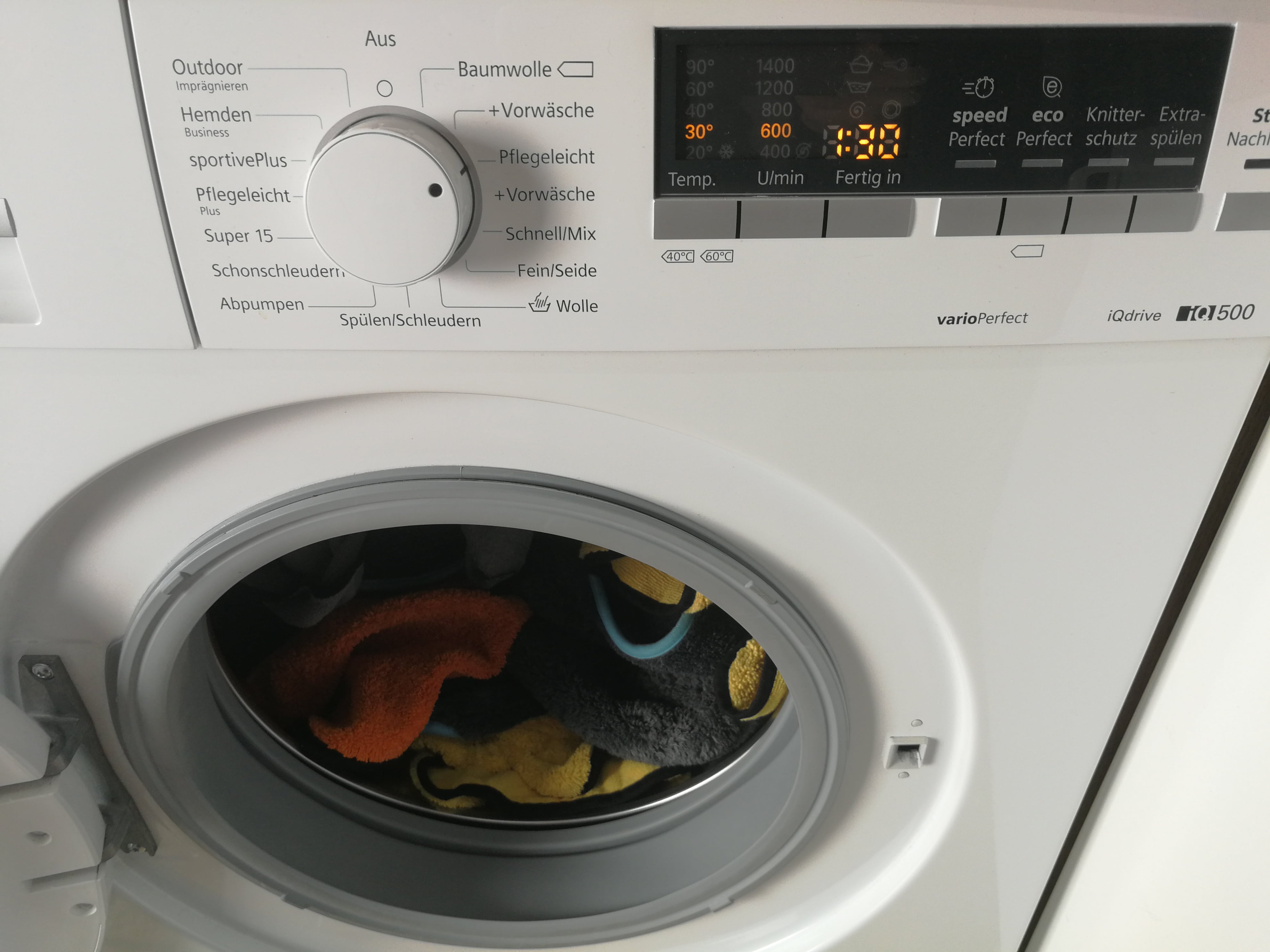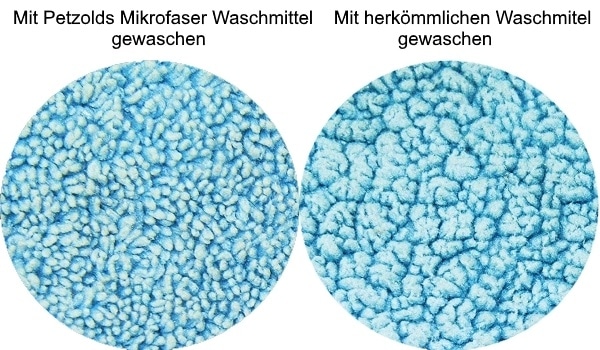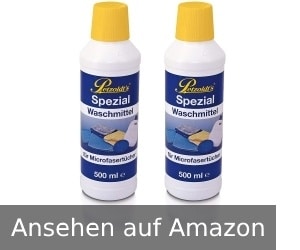Beim Mikrofasertücher waschen gibt es einiges zu beachten. Wer seine teuren Tücher einfach mit der normalen Wäsche zusammen in die Waschmaschine wirft, wird nicht lange Freude an ihnen haben.
Deshalb erklären wir dir in diesem Artikel alles rund um das Thema Mikrofasertücher waschen und was du bei der Pflege zu beachten hast. Außerdem möchten wir dir drei geeignete Mikrofaser Waschmittel vorstellen.
Mikrofasertücher richtig waschen

Keinen Weichspüler verwenden
Die Verweundung von Weichspüler ist der Tod für jedes Microfasertuch. Durch Weichspüler verkleben die feinen Fasern des Tuchs. Mit einem speziellen Mikrofaser Waschmittel kann man allerdings verklebten Tüchern neues Leben einhauchen. Oftmals reicht aber ein Waschgang nicht aus und es muss ein zweites mal gewaschen werden um die letzten Verklebungen vollständig zu lesen.
Man sollte seinen Mikrofasertüchern ein spezielles Mikrofaser Waschmittel gönnen. Beim Waschgang ist eine Temperatur von 40°C vollkommen ausreichen. Auch die Umdrehungsanzahl beim schleudern sollte nicht zu hoch gewählt werden, da sonst die mechanische Belastung am Rand der Waschtrommel zu hoch ist. 1000 Umdrehungen sollte man maximal wählen, aber auch schon bei 400 bis 600 Umdrehungen werden die Mikrofasertücher perfekt gewaschen.
Zwar dürfte dir der große, rote Hinweis bereits aufgefallen sein, indem wir ausdrücklich darauf hinweisen keinen Weichspüler zu verwenden aber sicher ist sicher.
Kein Weichspüler!
Nach der Wäsche müssen deine Tücher natürlich auch noch getrocknet werden. Optimal ist es die Mikrofasertücher in den Trockner zu werfen, denn hier werden die Fasern gut gelockert und das Tuch wird wieder schön flauschig. Auch hier solltest du ein schonendes Trockenprogramm wählen. Über 60°C solltest du nicht gehen.
Hast du keinen Trockner zur Verfügung kannst du deine frisch gewaschenen Mikrofasertücher natürlich auch an der Luft trocknen. Am besten schüttelst du die Tücher vor dem Trocknen kräftig aus, sodass sich die Fasern wieder aufstellen. So werden die Tücher auch an der Luft getrocknet wieder flauschig.
Mikrofaser Waschmittel






Mikrofaser Waschmittel enthält im Gegensatz zu herkömmlichen Waschmittel keine Duftstoffe, Enthärter oder Bleichmittel.
Zusatzstoffe lagern sich in den Mikrofasern ab und reduzieren die Leistung des Mikrofasertuchs von Wäsche zu Wäsche.
Durch das Falsche Waschmittel reduziert sich über die Zeit die Wasser-/Schmutzaufnahme der Mikrofaser und besonders Auto Trockentücher ziehen dann gerne einmal schlieren. Mit einem Mikrofaser Waschmittel hat man diese Probleme nicht.
Um Poliertücher, Trockentücher, Waschhandschuhe und Applikatoren schonend zu reinigen hat Petzolds dieses Mikrofaser Waschmittel entwickeln lassen.
Mit den zwei 500 ml großen Flaschen hat man genügend Mikrofaser Waschmittel um insgesamt 200 kg Mikrofasertücher zu waschen. Bei 50 ml pro Waschgang dürften die zwei Flaschen also eine ganze Weile halten.
Zusätzlich liegt dem Waschmittel eine detailierte Anleitung bei, wie man Mikrofasetücher am besten wäscht. Diese brauchst du zwar nicht mehr, da du ja jetzt bereits alles über das Waschen von Mikrofasertüchern weißt aber als Erinnerung ist es sicherlich nützlich.
Verklebte Microfasertücher wieder zum Leben erwecken
Werden Mikrofasertücher mit dem Petzolds Mikrofaser Waschmittel gewaschen, werden die Fasern von älteren und stärker benutzten Microfasertüchern regeneriert.
Die Tücher werden wieder weicher und die Funktion verbessert sich ebenfalls.

Verwandte Kaufberatungen und Bestenlisten:
